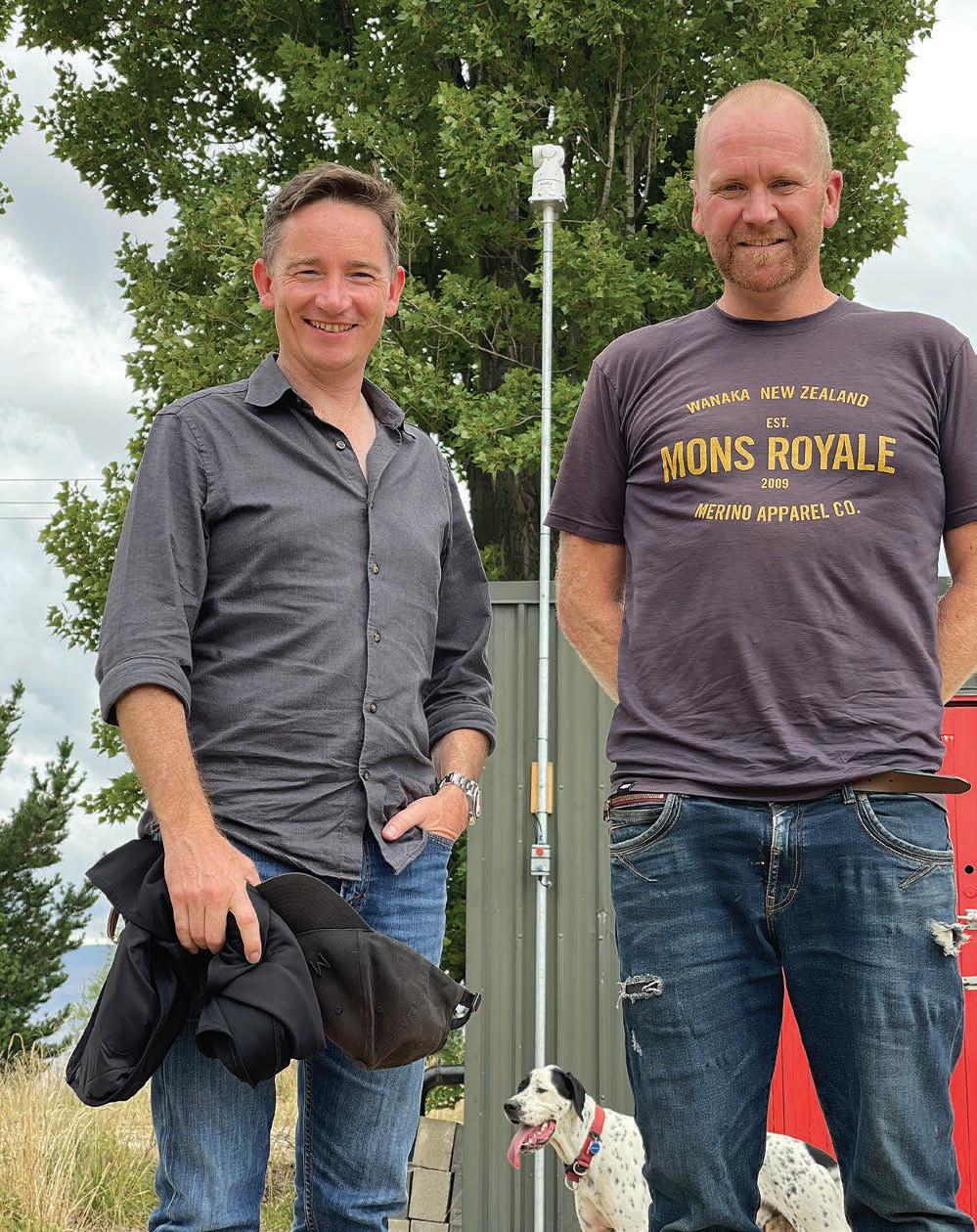
5 minute read
Pulpit
FARMERS WEEKLY – farmersweekly.co.nz – March 1, 2021 27
Native trees should be a priority
Andrew Luddington
IWAS delighted to read the article Native Trees Come with Some Caveats, featuring Steve Wakelin and Tim Payn. It is most unfortunate for natives that the Emissions Trading Scheme (ETS) has focused purely on the amount of carbon lock-up facilitated by an area of trees and not taken into account other and arguably as important criteria.
When we focus purely on carbon the result will be monoculture. Radiata Pine is the fastest of all, so why bother with anything else?
What we will have, and what is already happening, is land bought up by onshore and offshore speculators looking to see the price rise from the quoted $35 per unit, with forward contracts to $46 per unit, to the Climate Change Commission’s (CCC) ceiling of $100 per unit. At a growth rate of exotics at 34 tonnes of carbon per hectare, it is easy to see a very quick return on investment when receiving $3400 per hectare a year. And when the establishment is done, the beneficiary to this scheme sits pretty and idle with nothing to do but count money. It is of no surprise that offshore companies are all revved on the smell of money for old rope, and are wanting to buy up our land.
And when you have natives trundling along nice and slowly soaking up just 6.5t of carbon a year, it is likely that the law of united consequence will be their destroyer. I live near the Hinewai Reserve at Akaroa. It is a magnificent example of how to recreate 1200ha of native natural regrowth through hard work and controversy even.
The initial concept was dismissed with the line “Only Fools and Dreamers”. And now it stands as a shining example of how to do it. I have worked on many native recreation or restoration sights such as Quail Island, Te Ara Kakariki’s green dots, and currently for the Summit Road Society. My role is to enhance and preserve the purity of the bush in terms of both flora and fauna.
Any exotic trees are as welcome as cats, stoats, dogs and possums. These places take in carbon at a modest rate compared to exotics, but their contribution to the general health of the planet is colossal. Now, if the ownership of these places were to change to ETS cash hungry business they would be destroyed. Why claim 6.5t when you can claim 34? Native bush would then be seen as a weed that impedes the monetary flow. What would result is a green tide of Radiata Pine creeping up our areas of outstanding natural beauty. A living green desert of abject monoculture with single purpose.
We are struggling with exotics growing as weeds in the high country, particularly in the Mackenzie country in central Otago. They grow like lupins. Exotic trees are arguably the most pernicious weeds of all. Volunteers and even paid staff are busy pulling them out right now and if we think of nothing but carbon lock-up numbers, one wonders what is the point of trying to control them at all. A landowner can expect to sell carbon credits via exotic creep by doing absolutely nothing at all. They or Carbon Credit Farming PLC does not even need to go to the cost of planting. So we have Radiata Pine or other fast growing exotics taking over our backcountry like triffids. And it is a catastrophe. Currently, this planet is not just in a time of anthropomorphic (human induced) climate change, we are in an anthropomorphic mass extinction event. It is going on right under our noses and we are hardly noticing. Counting nothing but carbon lock-up to try to fix the former problem is to further the latter.
There is no doubt that natives provide so much more to the general health of the planet than exotic monoculture. We can also look at other benefits. Super high Manuka content honey in London’s top department store is selling for about £2000 for a pot of a few hundred grams. It is silly money. I don’t think Radiata honey will ever be worth anything, even if it can create any honey at all.
So what to do?
Well, I have planted about 2.5ha of natives on my farm near Rakaia. I have received no income for it and the cost has been considerably more than the $6600/ha; that is the figure used in the article. Natives need to be grown close together. They hate exposure. And a native tree that is large enough to have a good chance of survival in the first few critical years will cost at least $4 including its guard.
It is probable that the $6600 figure accounts for the tree and guard only, not the planting cost, the cost of replanting those that have failed and the first few years of critical hard graft to keep them alive. So to answer the question ‘what to do?’, I am badgering the Government to pay out grants for native planting and not for exotics. I am British and that has been happening there for decades, and even way before anyone mentioned global warming. I would also argue for a premium to be paid for a carbon credit achieved by a diversified forest of suitable natives to the region to bring the income in excess of cost, meaning the profitability of natives versus exotics, into parity.
And just as a final and positive point, I came here 14 years ago, bought a farm and have been planting 500 or so native trees on it every year. Fourteen years ago, the area around Rakaia where I farm was pretty stark when it came to diversity. That is changing. I am seeing little green dots of native vegetation here and there, the odd native shelterbelt, and even an entire native wood. These are not being planted for money. They are being planted for love. Because we care. And it is a damn good feeling, and we need a lot more of it.
ThePulpit
Who am I?
Andrew Luddington is a crop and sheep farmer in Rakaia, Canterbury.
Your View
Got a view on some aspect of farming you would like to get across? The Pulpit offers readers the chance to have their say. farmers.weekly@globalhq.co.nz Phone 06 323 1519
OUTCOME: Canterbury farmer Andrew Luddington believes that if we focus purely on carbon the result will be monoculture.

Protecting Kiwi Waterways
Dr Bert Quin





